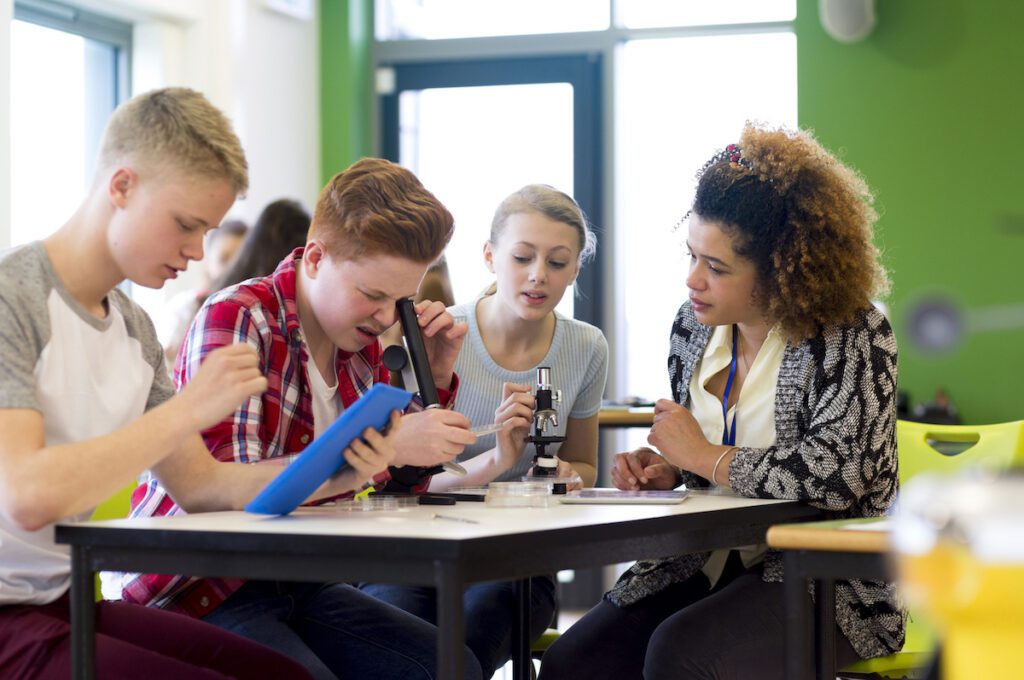Attendance in education Jan 2022: A critical time for schools and colleges

Commenting on new data released today (11 Jan) by @EducationGovUK showing levels of pupil and staff absence at the start of term,

Paul Whiteman, general secretary of school leaders’ union NAHT, said:
“The figures released by the government today support NAHT’s own survey findings, showing that staff absence on the first days of term last week was significant. Schools are doing a brilliant job to keep things going in the face of very challenging circumstances, but it is very far from business as usual. And the concern is that the situation could worsen over the coming weeks.
“A small, but growing, minority of schools are already experiencing teaching staff absences of more than 20%, and the government itself is planning for 25% staff absence rates. While schools will do everything they can to manage the situation, there is a reality that needs to be acknowledged here. There is no escaping the fact that if a school has a quarter of its workforce off, that will have a significant impact on education.
“School leaders will be making decisions on a case by case basis, based on the unique circumstances they find themselves in. What’s important is that they are trusted to make these decisions in the best interests of their pupils and staff.”

Geoff Barton, General Secretary of the Association of School and College Leaders, said:
“Any hope that the Christmas holidays would act as a firebreak for schools and colleges have evaporated, with the latest set of statistics showing an increase in the number of pupils absent because of Covid-19 and, more significantly, the number of staff away from the classroom having risen still further.
“Despite the fact most secondary schools were phasing the return of students for testing to take place there is still huge disruption, with both confirmed and suspected coronavirus cases having risen since the last data was published in mid-December. The challenges posed by having so many staff absent will continue to put schools and colleges under severe pressure.
“The costs of bringing in the supply staff needed to maintain learning is crippling for schools and colleges and the government needs to step in to help, as well as providing more support on ventilation.
“There have been more positive noises about rates of infection beginning to plateau in recent days and we can only hope this is reflected soon in the attendance figures. Until then, schools and colleges will continue to work incredibly hard to maintain education as best they can in the most trying of circumstances.”

Kevin Courtney, joint general secretary of the National Education Union, said:
“It is now abundantly clear that the effects of Omicron on the operation of schools are highly significant. With almost 1 in 20 staff absent due to COVID last Thursday, there is no reason to suppose this will ease soon. London and the south have already seen a significant rise in December, and with the R rate high in the north of England there are ever more compelling arguments to protect the school community with proper mitigations to slow the spread of COVID and thereby ensure that education for children and young people is as uninterrupted as possible and the health and wellbeing of staff and students protected.
‘Government needs to act decisively and give schools the equipment they need to ensure proper ventilation in schools and colleges in an attempt to keep COVID infection as low as possible. Relying on a workforce of retired teachers appearing from thin air and in record time is just not enough to meet this challenge.
“These attendance reports must now also return from being fortnightly to weekly, In the same format as before last summer. This is a critical time for schools and colleges and we must see emerging trends quickly rather than in the rear-view mirror.”

Natalie Perera, Chief Executive of the Education Policy Institute (EPI) said:
“Today’s figures reflect the huge challenges facing schools and come as we have seen further evidence that increasing numbers of pupils are switching to online learning.
“Teacher absences have increased significantly, while a very large proportion of support staff are now also absent. The acute staff shortages seen in schools are likely to persist for some time due to the high level of infection in the general population.
“The government needs to monitor how schools are responding to shortages and consider whether its workforce fund to help schools cover absent staff goes far enough.
“Our research has shown an association between pupil absence and higher learning losses, so the high rate of pupils out of school seen today continues to be a concern.
“The government must closely follow pupil absences this term and consider whether additional financial support to help pupils avoid further learning losses is needed. Learning losses vary considerably across the country, with those from poorer backgrounds and those in parts of the North of England and the Midlands hardest hit. We need to see education interventions that are well-targeted to those areas most affected.”

Bridget Phillipson MP, Labour’s Shadow Education Secretary,responding to new data showing 310,000 children were out of school due to Covid on 6 January, with 106,000 teachers, teaching assistants and school leaders also absent, said:
“Schools are facing a renewed wave of Covid chaos with staff and pupil absences rising sharply. Yet the government is still dragging its feet on the action needed to keep kids learning.
“Thousands of schools are lacking any ventilation support leaving children learning in freezing classrooms, Ministers are unable to say how many people have responded to their teacher volunteer drive and hundreds of thousands of secondary pupils haven’t had their first vaccine. It is incompetent, complacent, and inadequate.
“Ministers must now step-up to secure our children’s learning and their futures, with a serious plan to tackle workforce absences and ventilate schools to keep children learning together in class.”
Attendance in education and early years settings during the coronavirus (COVID-19) pandemic: 23 March 2020 to 6 January 2022
A summary of attendance in education settings up to 6 January 2022
Applies to England
Documents
Attendance in education and early years settings during the coronavirus (COVID-19) outbreak: 23 March 2020 to 6 January 2022
Details
The data on Explore Education Statistics shows attendance in education settings since Monday 23 March 2020, and in early years settings since Thursday 16 April 2020. The summary explains the responses for a set time frame.
The data is collected from a daily education settings status form and a monthly local authority early years survey.











Responses